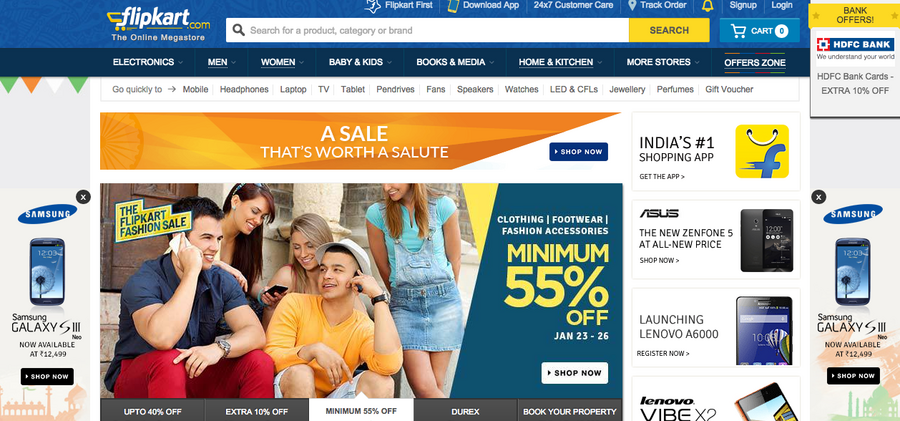What is Flipkart? A company starts an e-commerce shop that initially sells books. Slowly, but surely, it expands to sell e-books, stationary, electronics, and home goods. It begins to offer unique delivery options, such as cash-on-delivery and net banking. Investors start to take notice, and about seven years after its inception, it is one of the hottest tech companies in the country, getting a hand in everything from Wi-Fi services to electronics production.
Think we’re talking about Amazon? If you live in India, you know that the company described above is Flipkart, a company that has taken Amazon’s e-commerce model and localized it.
Flipkart offers more than 20 million products across 70 categories with same-day delivery guarantees in 10 cities in India. So far, the company only operates in India, but in December it announced it raised more than $700 million in investment for long-term growth. This could mean an expansion to nearby countries or developing more products, like its new line of home and electronic goods.
Why will it beat Amazon? E-commerce is not the same around the world, and cultural differences in spending can make or break a company. Flipkart gets this and provides services that speak to Indian consumers. Online payment infrastructure isn’t as developed in the country, and there isn’t as much trust in mobile transactions. With that in mind, Flipkart offers cash on delivery orders. On a larger scale, it recently bought up a few smaller Indian e-commerce websites, such as Myntra and LetsBuy, to gain access to more local consumers and diversify its offerings.
Amazon won’t go down without a fight, however. It expanded into India in 2013 and sales grew 23 percent over the next year. Right after Flipkart announced a $1 billion round of funding last summer, Amazon announced it was sinking another $2 billion into its India business. With India being one of the world’s fastest growing economies, this fight for the e-commerce market will be one to watch.








